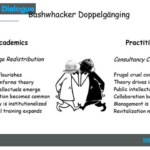
EPIC Profiles Series
by PAUL OTTO
EPIC2016 Keynote Speaker John F. Sherry is the Raymond W. & Kenneth G. Herrick Professor of Marketing in the Mendoza College of Business and Professor of Anthropology at the University of Notre Dame. Join John at EPIC2016!
I caught up with Dr. John F. Sherry, joint professor in Marketing and Anthropology at the University of Notre Dame, in late spring, right after exams. John has had a prolific career in ethnography as a practitioner and theorist, with 10 books, over 100 articles, and numerous consulting engagements to his name. He is a collaborative scholar, and quick to point out others’ influence on his work—Sidney Levy, Joel Cohen, William Wilkie, H. Russell Bernard, Marvin Harris, and more.
In addition to his work on brand strategy and consumer behavior (among his many distinctions, John is past president of the Consumer Culture Theory Consortium), John has had “a long term investment in placeways—retail, atmospherics, that kind of thing,” which he says resonates with...









